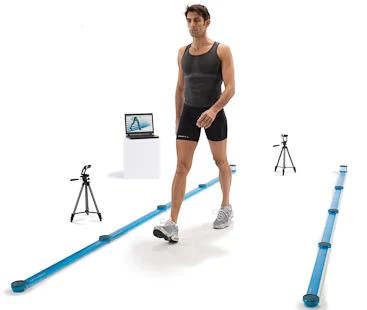
By Kure Clinic
WHAT IS GAIT
Gait refers to the pattern of movement of an individual’s body when walking or running. It involves the coordinated movement of various body parts such as the legs, arms, trunk, and head. Gait is influenced by many factors, including an individual’s musculoskeletal and neurological systems, body weight, and environmental factors.
Changes in gait can be a sign of underlying health problems, such as musculoskeletal injuries, neurological disorders, or balance problems. Gait analysis is a technique used to evaluate an individual’s gait and identify any abnormalities or inefficiencies in their movement pattern. Gait analysis is commonly used in sports performance, rehabilitation, and medical settings to assess and improve movement patterns. GAIT PATTERNS
TYPES OF GAIT
Normal Gait: This is the typical walking pattern seen in healthy individuals with no gait abnormalities.
Antalgic Gait: This is a gait pattern that is adopted by individuals to avoid pain. It involves a shorter step length on the affected side and a longer stance phase on the unaffected side.
Ataxic Gait: This is a gait pattern that is associated with cerebellar disorders. It is characterized by an unsteady gait with wide-based steps, irregular step length, and poor coordination.
Trendelenburg Gait: This is a gait pattern that is associated with weakness of the hip abductor muscles. It is characterized by a lurching gait with a lateral shift of the trunk towards the unaffected side during the stance phase.
Steppage Gait: This is a gait pattern that is associated with foot drop. It is characterized by a high stepping gait with the foot lifted high to clear the ground.
Parkinsonian Gait: This is a gait pattern that is associated with Parkinson’s disease. It is characterized by a shuffling gait with reduced arm swing, stooped posture, and small steps.
Scissor Gait: This is a gait pattern that is associated with spasticity of the lower limbs. It is characterized by a crossing of the legs during the swing phase, giving the appearance of walking through water.
These are just a few examples of the many different gait patterns that can occur. The specific gait pattern exhibited by an individual
HOW PHYSIOTHERAPY CAN HELP
Physiotherapy can help individuals with gait abnormalities in several ways, including:
Gait analysis: Physiotherapists can use specialized equipment to analyze an individual’s gait pattern and identify any abnormalities or inefficiencies in their movement pattern.
Exercise therapy: Physiotherapists can prescribe specific exercises to improve strength, flexibility, balance, and coordination, which can help to improve gait patterns.
Manual therapy: Physiotherapists can use hands-on techniques such as massage, joint mobilization, and stretching to improve joint mobility, reduce pain, and improve gait patterns.
Assistive devices: Physiotherapists can recommend and teach individuals how to use assistive devices such as braces, crutches, or orthotics to improve their gait pattern.
Education: Physiotherapists can educate individuals on proper walking and running techniques, body mechanics, and posture, which can help to improve gait patterns and reduce the risk of injury.
Functional training: Physiotherapists can use functional training techniques to help individuals improve their ability to perform activities of daily living that require walking and running.
Overall, physiotherapy can be a valuable tool for improving gait patterns in individuals with a variety of conditions, including musculoskeletal injuries, neurological disorders, and balance problems.
Kure Team
HOW CHIROPRACTOR CAN HELP
Chiropractors can help individuals with gait abnormalities in several ways, including:
Spinal manipulation: Chiropractors can use spinal manipulation to improve joint mobility and alignment, which can help to improve gait patterns.
Soft tissue therapy: Chiropractors can use soft tissue techniques such as massage, myofascial release, and trigger point therapy to reduce muscle tension and improve flexibility, which can help to improve gait patterns.
Exercise therapy: Chiropractors can prescribe specific exercises to improve strength, flexibility, balance, and coordination, which can help to improve gait patterns.
Posture correction: Chiropractors can educate individuals on proper posture and body mechanics, which can help to improve gait patterns and reduce the risk of injury.
Foot and ankle adjustments: Chiropractors can perform adjustments to the foot and ankle joints to improve joint mobility and alignment, which can help to improve gait patterns.
Custom orthotics: Chiropractors can prescribe custom orthotics to improve foot and ankle alignment, reduce pain, and improve gait patterns.
Overall, chiropractic care can be a valuable tool for improving gait patterns in individuals with a variety of conditions, including musculoskeletal injuries, neurological disorders, and balance problems. However, it is important to note that chiropractors may not be able to provide a comprehensive evaluation and treatment plan for complex gait abnormalities, and may need to refer individuals to other healthcare professionals as needed.
epends on the underlying cause and severity of their condition.